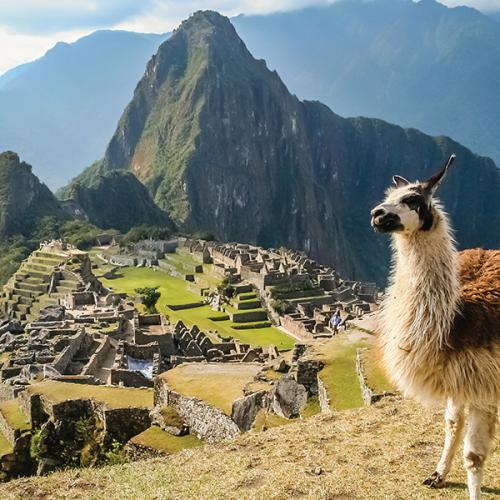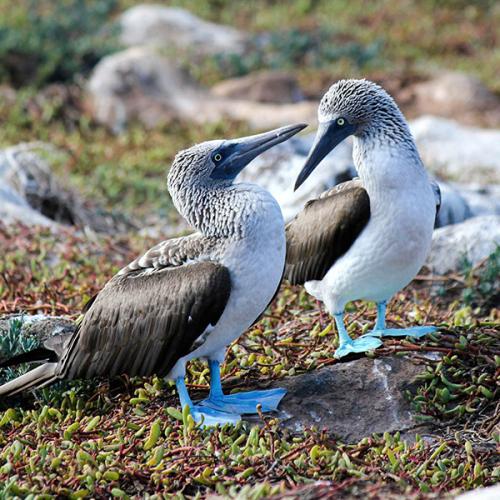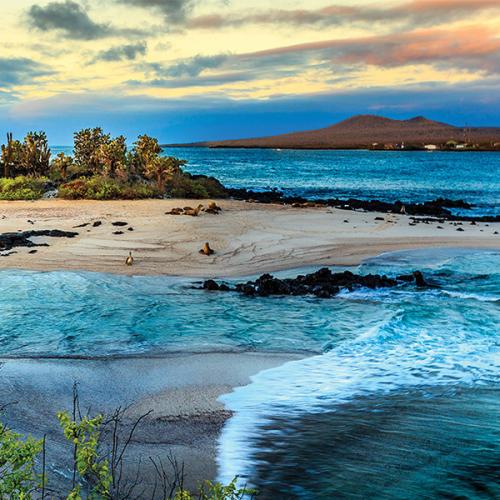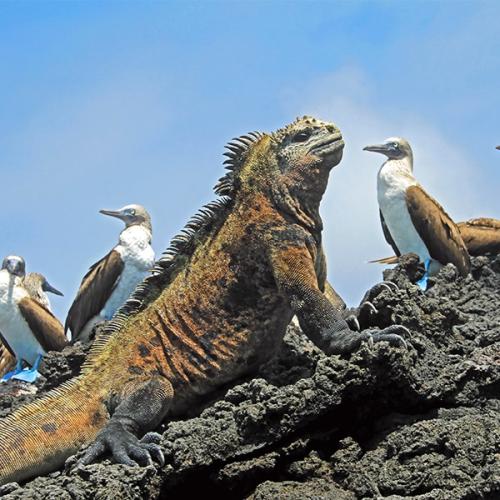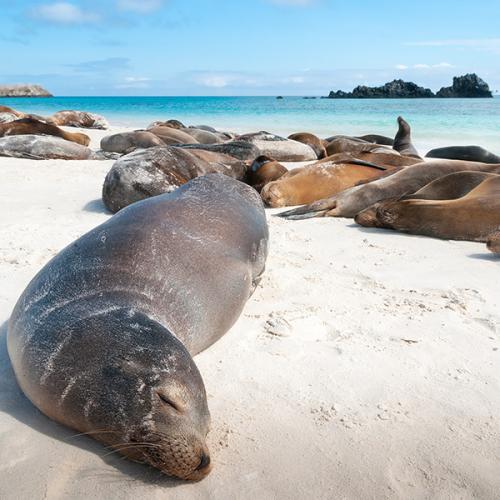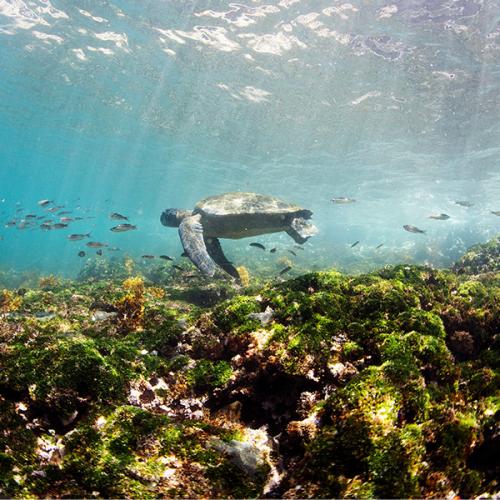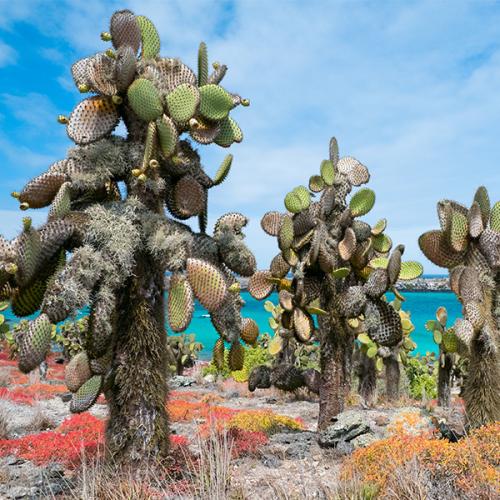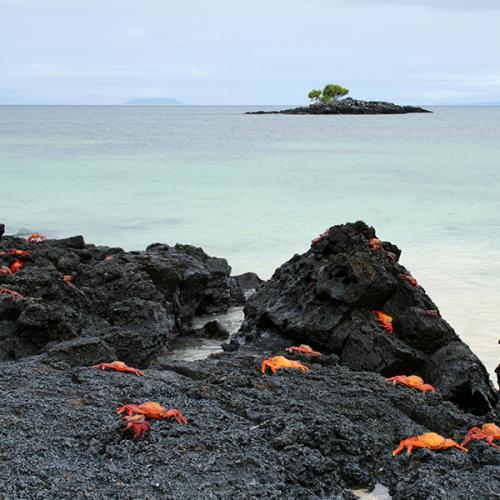If you’re planning to take a bucket-list holiday, then you may be wondering when is the best time of year to embark on a Galapagos cruise. You’ll be sailing the archipelago of volcanic islands along the equator in the Pacific Ocean, where a haven of nature and wildlife awaits.
You are guaranteed wonderful wildlife experiences no matter what time of year you travel to the Galapagos.
The Galapagos are a year-round destination due to their location along the Equator, therefore, the differences lay mostly in the animals that can be spotted and their behaviour.
But when is the best time to embark on a Galapagos Islands cruise? The answer lies in understanding the islands’ distinct seasons and the remarkable experiences each period offers.
High Season (June to August and December to January)
For many travellers, the high season in the Galapagos Islands aligns with their holiday plans, making it a bustling time for tourism. From June to August, and again from December to January, visitors flock to the islands to take advantage of the dry and cooler weather.
However, with popularity comes higher prices and increased competition for accommodations and cruise bookings. It’s advisable to plan and book well in advance to secure your preferred cruise and accommodations during this peak period.
June: Garúa Season and Giant Tortoise Migration
June marks the beginning of the garúa season, with cooler temperatures and stronger currents. Giant tortoises on Santa Cruz Island migrate from the highlands to the lowlands in search of nesting places, and humpback whales can be spotted passing through.
July: Active Bird Communities
Sea bird communities are highly active in July, especially the blue-footed boobies on Española. Flightless cormorants perform courtship rituals on Fernandina, while American oystercatchers nest along the shores of Santiago Island.
August: Mating Season and Migrant Shorebirds
Galapagos hawks court on Española and Santiago, and Nazca boobies and Swallow-tailed gulls nest on Genovesa Island. Migrant shorebirds begin arriving, and sea lions begin their pupping season.
December: Hatchings and Mating Behaviours
Giant tortoise eggs begin hatching, and green sea turtles display their mating behaviours. As the rainy season continues, the islands become lush and green, offering great weather for exploration.
January: Beginning of the Rainy Season
As January marks the beginning of the rainy season, the islands come alive with renewed greenery. Land birds start nesting, typically after the first rain showers.
One remarkable sight on Hood (Española) Island is the adult marine iguanas, which become brilliantly coloured, ranging from red and orange to even green and purple.
It’s also the time when green sea turtles arrive on the beaches for egg laying, and land iguanas begin their reproductive cycles on Isabela Island. With rising water and air temperatures, January is an ideal time for snorkelling.
Shoulder Season (April to May and September to November)
The shoulder seasons in the Galapagos Islands, spanning from April to May and September to November, offer a balance between favourable weather conditions and fewer crowds. During these transitional months, the islands experience a blend of warm temperatures and occasional light showers.
Travellers can enjoy more intimate experiences with nature and a greater sense of tranquillity amidst fewer visitors. Cruise itineraries may also offer more flexibility, allowing for spontaneous encounters with wildlife and exploration of lesser-visited sites.
April: Albatross Courtship and Tortoise Hatchlings
April marks the arrival of waved albatrosses to Española, where amazing courtship displays begin. It’s also the end of the hatching season for giant tortoises, and the first sea lion pups are born. Frigatebird chicks start hatching, and visibility in the water is excellent for snorkelers.
May: Courtship and Hatching
In May, wildlife in the Galapagos begin their courtship rituals, while sea turtles continue hatching on various beaches. Palo santo trees begin shedding their foliage, and waved albatrosses on Española start laying their eggs. It’s also the nesting period for storm petrels.
September: Cold Season Peak
September marks the peak of the cold season, with cooler air temperatures and remarkable activity among Galapagos penguins on Bartolome Island. Sea lions are highly active, and baby sea lions provide a delightful sight for visitors.
October: Nesting and Garúa
Lava herons start nesting, and Galapagos fur seals begin their mating period. Blue-footed boobies raise chicks all over Española and Punta Vicente Roca, while garúa can be expected in most locations.
November: Sea Lion Pupping Continues
Pupping of sea lions continues, and breeding season begins for brown noddies. November offers calm seas and good visibility for snorkelers, with the chance to spot whale sharks at the north-western islands.
Low Season (February and March)
February and March mark the low season in the Galapagos Islands, characterised by warmer temperatures and occasional rainfall. While these months may not be as popular among tourists, they present unique opportunities for budget-conscious travellers and those seeking solitude.
During the low season, visitors can witness the islands’ landscapes come alive with vibrant blooms, as many plant species enter their peak flowering season. Wildlife remains abundant, and with fewer tourists around, encounters with iconic species become even more intimate and memorable.
However, it’s essential to note that some cruise itineraries may be limited during the low season due to maintenance or fewer bookings. It’s advisable to research and confirm the availability of your preferred Galapagos Islands cruise options in advance.
February: Nesting Season
February brings nesting season to various species across the islands. Greater flamingos start nesting on Floreana Island, while Bahama pintail ducks begin their breeding season. Marine iguanas nest on Santa Cruz Island, and the highest water temperature reaches a balmy 25°C (77°F). While penguins are scarce on Bartolome Island, Galapagos doves reach their peak nesting season.
March: Equinox and Nesting Season
March sees the highest precipitation of the rainy season, with sporadic tropical rains and intense sun. Marine iguanas nest on Fernandina Island, and the summer equinox signals the arrival of waved albatrosses to Española. Snorkelers can enjoy warm waters teeming with marine life, though some shores may experience deep surges from northern currents.
The best time to go on a Galapagos cruise depends on your preferences, budget, and desired experiences. Whether you choose to visit during the high, shoulder, or low season, each period offers its own set of attractions and advantages. Regardless of when you decide to embark on your adventure, a journey to the Galápagos Islands promises awe-inspiring encounters with nature and memories to last a lifetime.
To book your own cruise to visit the wildlife in the Galapagos, call our travel experts on 02380 658 386, or start your search here.
Feeling Inspired?
CALL OUR TEAM TO BOOK ON 02380 658 386





